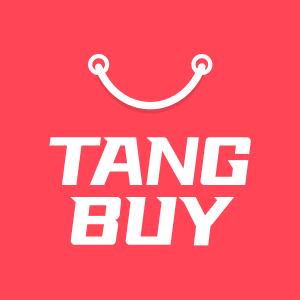BigCommerce vs Shopify What Matters Most for Your eCommerce Success in 2025
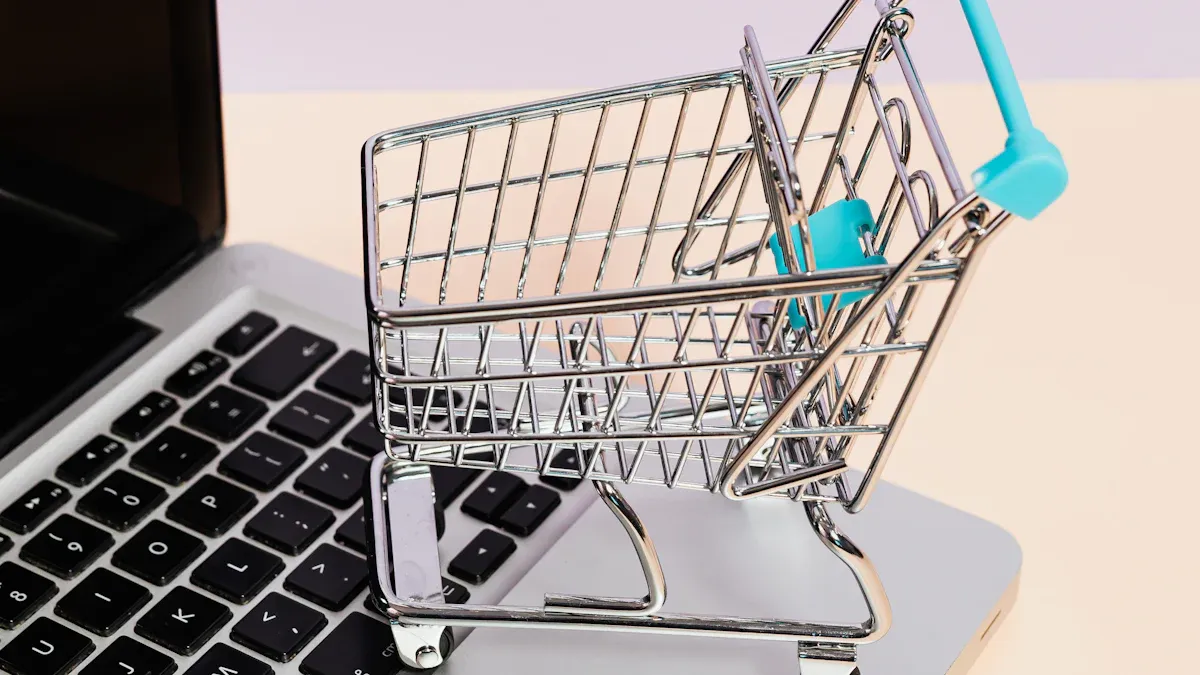
If you want to win in eCommerce for 2025, start with Shopify. You get a platform that’s easy to use, cost-effective, and proven to boost sales. Just look at these numbers:
What Matters | Shopify Advantage |
|---|---|
Easy Checkout | Shop Pay on 2M+ sites, fewer abandoned carts |
High Conversions | 4.29% email rate, $36 ROI for every $1 spent |
Customization | 13,000+ apps to grow your store |
You can track everything with Shopify’s built-in analytics. This eCommerce Breakdown will help you pick what works best for your store.
Key Takeaways
Shopify is simple to use and fast to start. You can add many features from its big app store. You do not need to know how to code.
BigCommerce has many tools already built in. It does not charge transaction fees. It works well for bigger stores or B2B stores. You get technical support if you need help.
Shopify helps you sell more with quick checkout. It also has strong marketing apps. BigCommerce gives you more control and better SEO tools.
Both platforms work well as your store grows. Shopify is easier for beginners. BigCommerce is better for people who know more about tech.
Shopify usually costs less for most people. BigCommerce can save money because it includes more features. You do not need to buy extra apps.
Both platforms are safe and secure. Shopify does most security work for you. BigCommerce has strong tools but you need to set them up.
You should try free trials of both platforms. This helps you see which one fits your business, budget, and team skills.
Plan your store launch step by step. Build a good team. Get your data ready. Make your store look the way you want. Train your staff so your store can do well.
Quick Comparison

At a Glance
A table is a fast way to see how Shopify and BigCommerce are different. You can compare them side by side and spot what matters most.
Aspect | Shopify | BigCommerce |
|---|---|---|
Business Stage | All stages (startups to enterprise) | Best for mid-sized to enterprise businesses |
Industry Suitability | Fashion, beauty, subscriptions | B2B, wholesale, high-volume retailers |
Technical Resources | Beginner-friendly, minimal coding | Needs technical skills or developer help |
Scalability & Growth | Grows with apps, Shopify Plus for big brands | Scales up without expensive upgrades |
Pricing | Can get pricey with apps and fees | No transaction fees, more cost-effective |
Ease of Use | Very easy, quick setup | Steeper learning curve, more advanced options |
Customization & Design | Easy theme changes, 80+ themes | 170+ themes, deep code editing possible |
eCommerce Features | Relies on apps for many features | Many tools built-in, fewer apps needed |
Marketing & Apps | 13,000+ apps, huge app store | Fewer apps, but strong built-in marketing |
Security | Free SSL, PCI DSS Level 1, 99.99% uptime | Same as Shopify |
You can watch your store’s numbers like conversion rate and order value. Shopify gives you reports right away. BigCommerce has good analytics too, but you may need to set up more things to see the same details.
Tip: Want to start selling fast? Shopify’s dashboard and mobile themes help you launch in just a few hours.
Best For
You might ask which platform fits your business. Here is a simple guide:
Shopify is best if you want:
Easy setup with little tech skill
Fast checkout that works on phones
Lots of apps for every job
Simple tools for small teams or solo owners
BigCommerce is best if you need:
Advanced features already included
Support for B2B or big sales
More ways to customize with a developer
Lower costs as you grow, since there are no transaction fees
Shopify’s checkout helps you get more sales and fewer abandoned carts. BigCommerce lets you control more if you have a big or tricky store. Both platforms keep your store safe, so you can focus on growing.
If you want the easiest way to sell online, pick Shopify. If your store is bigger or needs special tools, BigCommerce is a good choice.
eCommerce Breakdown: BigCommerce vs Shopify

Scalability
When your store grows, you want a platform that can keep up. Both Shopify and BigCommerce handle big jumps in traffic and sales, but they do it in different ways.
Walmart and UPS have shown that using predictive analytics helps them manage huge amounts of data and orders. This means both platforms can support stores with lots of customers and products.
Reports from companies like Gartner and Forrester say that cloud-native platforms scale better. Shopify uses a cloud setup, so you do not have to worry about servers or downtime. BigCommerce also uses the cloud and lets you add more features as you grow.
Tools like Docker and Kubernetes help both platforms run smoothly, even when your store gets busy.
Most businesses plan to spend more on scalable solutions. You want a platform that grows with you, not one that holds you back.
If you expect your store to get much bigger, both Shopify and BigCommerce can handle it. Shopify makes it simple for you to scale with apps and upgrades. BigCommerce gives you more control if you have a tech team.
Ease of Use
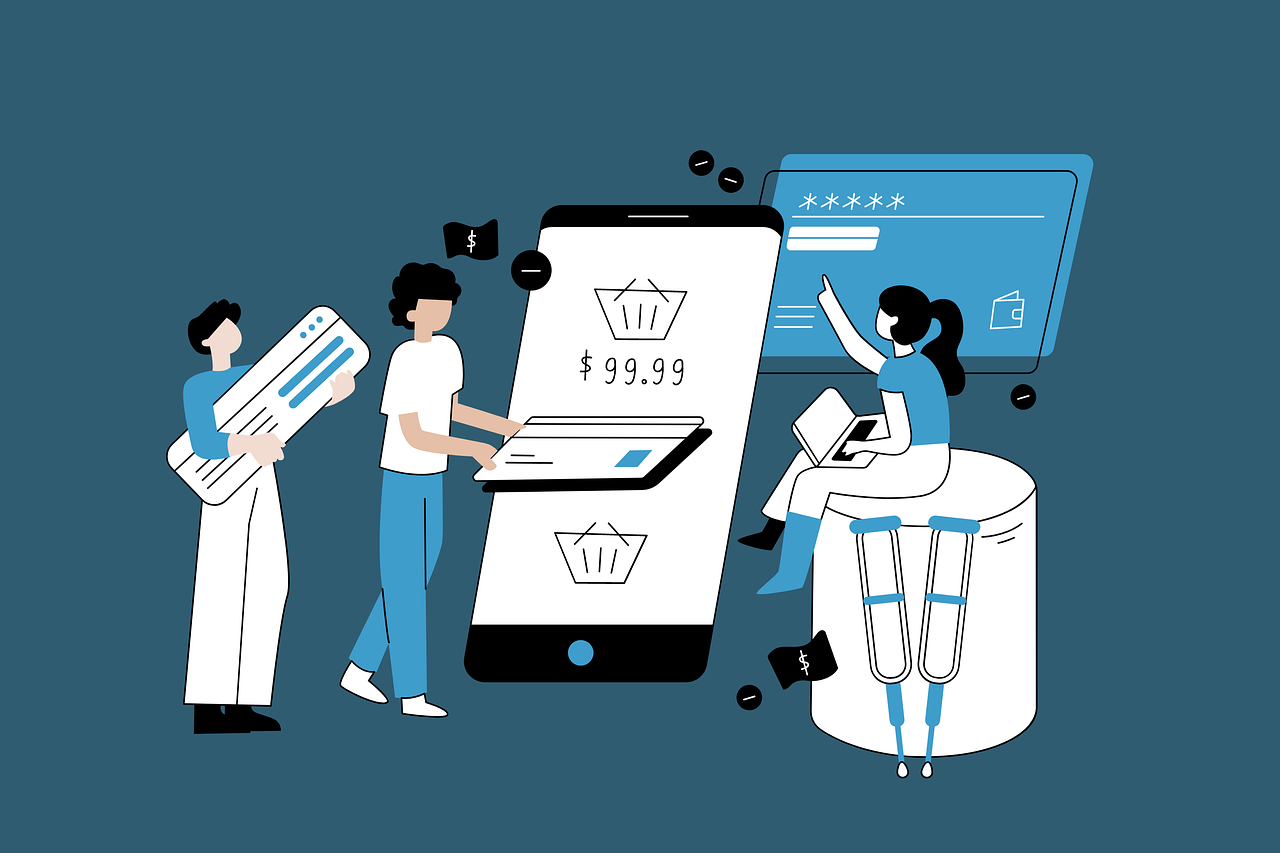
You want to spend time selling, not learning how to use your store. Shopify is famous for being easy to use. You can set up your store in a few hours, even if you have never built a website before.
Surveys show that people care about how easy a platform is to learn and use. In one study, users gave high scores for "ease of learning" and said they would recommend easy-to-use platforms to friends.
Shopify has a clean dashboard. You can drag and drop items, change themes, and add products without coding.
BigCommerce gives you more options, but it can feel overwhelming if you are new. You might need help from a developer for some features.
Here’s a quick look at what users say matters most:
What Users Want | Shopify Delivers | BigCommerce Delivers |
|---|---|---|
Easy to learn | ✅ Yes | ⚠️ Sometimes |
Fast setup | ✅ Yes | ⚠️ Takes longer |
Simple design changes | ✅ Yes | ⚠️ More steps |
If you want to launch fast and keep things simple, Shopify is your best bet. If you like to tinker and have tech skills, BigCommerce gives you more options.
Cost

Let’s talk about money. The price you pay each month is just the start. You also need to think about extra fees and the cost of apps.
BigCommerce Standard plan costs about $29.95/month. It includes many features, so you may not need to buy extra apps.
Shopify Basic plan is $29/month. Shopify has a huge app store, but some apps cost extra.
BigCommerce does not charge transaction fees. Shopify only skips these fees if you use Shopify Payments. If you use another payment gateway, you pay more.
Over five years, studies show BigCommerce can cost 45% more than Shopify. This includes setup, platform, and operating costs.
Here’s a table to help you compare:
Cost Component | Shopify (Baseline) | BigCommerce Compared to Shopify | Percentage Difference |
|---|---|---|---|
Total Cost of Ownership (5 years) | Baseline | 45% higher | +45% |
Implementation Costs | Baseline | 88% higher | +88% |
Platform Costs | Baseline | 32% higher | +32% |
Operating Costs | Baseline | 21% higher | +21% |
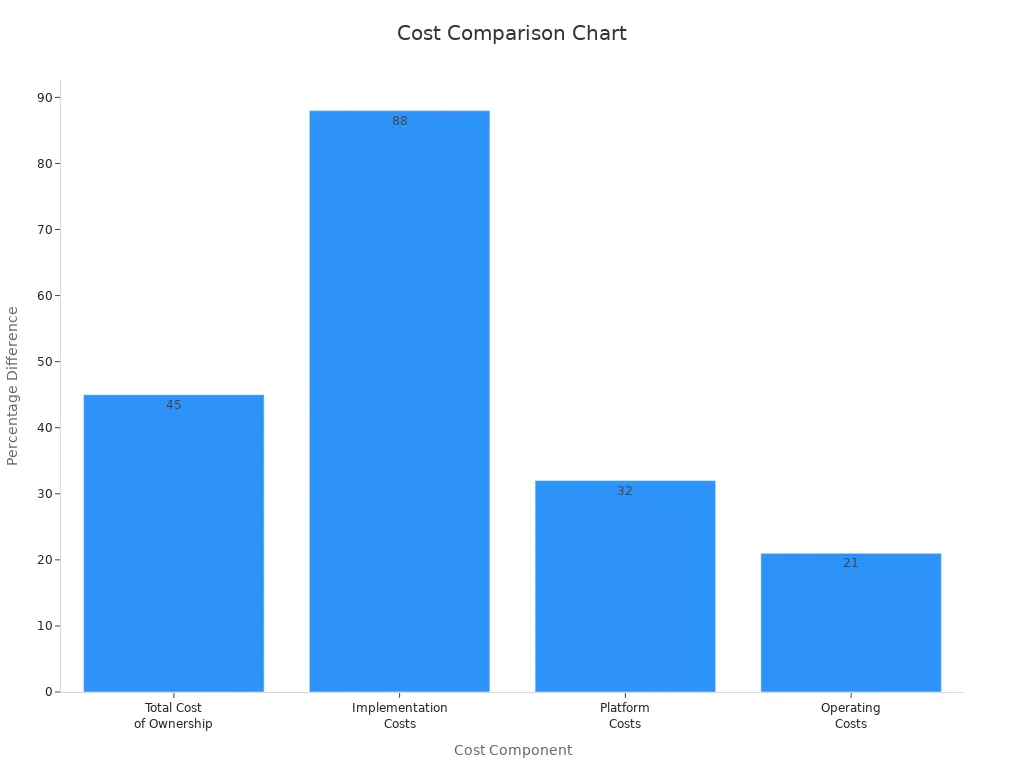
Shopify keeps your costs lower, especially as you grow. BigCommerce gives you more built-in features, but you might pay more over time.
This eCommerce Breakdown shows that Shopify is easier and cheaper for most users. BigCommerce works well for bigger stores with special needs, but you need to plan for higher costs and a steeper learning curve.
Integrations

When you run an online store, your tools should work together. Integrations help your store connect with apps for shipping, accounting, and marketing. This eCommerce Breakdown shows how Shopify and BigCommerce handle integrations.
Shopify has over 13,000 apps in its app store. You can find almost any tool you want. These apps help with email marketing and dropshipping. Most apps are easy to install. You do not need to know coding. Shopify’s app store has tools for inventory and social media ads. You can try new tools quickly.
BigCommerce also has strong integrations. Many features are built in, so you may not need as many apps. BigCommerce connects with top tools for shipping, accounting, and marketing. If you have a developer, you can use BigCommerce’s open API. This lets you build custom connections. You get more control, but setup can take longer.
Both platforms let you track sales, customers, and inventory with analytics. BigCommerce gives you native analytics and real-time inventory tracking. You can make custom reports or connect to your database. Shopify has easy dashboards and helpful insights. For advanced reports, you need a higher Shopify plan.
Tip: Shopify is best if you want lots of ready-to-use apps. BigCommerce works well if you want more built-in features and custom options.
Marketing Tools
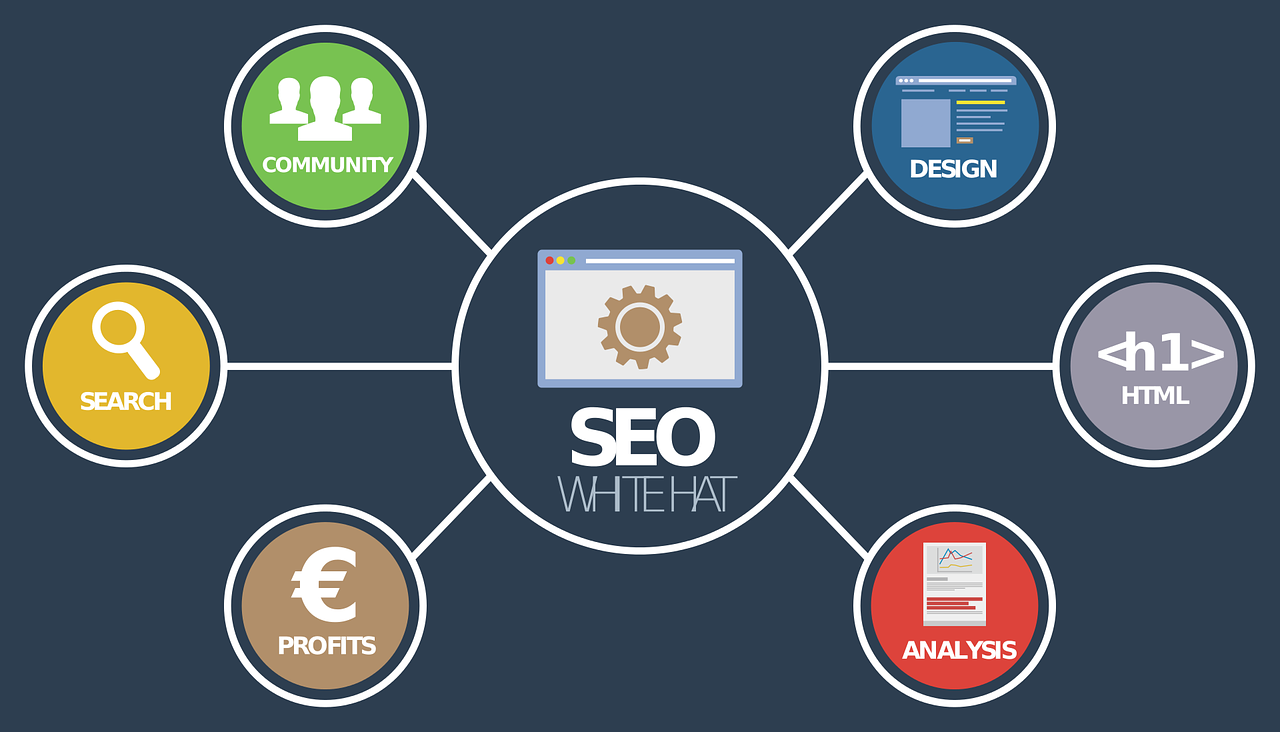
Marketing tools help you reach more customers and grow sales. This eCommerce Breakdown shows how each platform supports your marketing.
Shopify stands out with its huge app store. You can add tools for email, SMS, and social media. Many brands use Klaviyo for email and SMS. Optimizely helps with testing. Google Analytics tracks your store’s data. These tools show what works and what does not. Klaviyo shows customer value and engagement. Google Analytics tracks real-time data and conversions. Shopify’s built-in marketing tools are easy to use. You get the most power from third-party apps.
BigCommerce gives you strong built-in marketing tools. You can run promotions and offer coupons. You can set up abandoned cart emails without extra apps. BigCommerce connects with MailChimp and Buffer. MailChimp tracks open rates and revenue from emails. Buffer helps manage social media posts and see engagement. BigCommerce’s built-in tools save money. But you may find fewer advanced options than Shopify’s app store.
Here’s a quick look at some popular marketing tools and what they track:
Tool | What You Can Track |
|---|---|
Klaviyo | Revenue, customer value, email/SMS engagement |
Optimizely | Conversion rates, revenue, user engagement |
Google Analytics | Real-time data, audience, conversion tracking |
Unbounce | Landing page conversions, AI traffic routing |
Crazy Egg | Heatmaps, A/B tests, user clicks |
Buffer | Social engagement, reach, audience growth |
Sprout Social | Campaign ROI, engagement, effectiveness |
ShareASale | Sales, leads, commissions, conversion rates |
MailChimp | Open rates, clicks, conversions, revenue |
Note: Shopify gives you more choices for marketing apps. BigCommerce gives you more built-in tools. Pick what fits your marketing style.
Support

Good support helps you fix problems fast. You want answers right when you need them. This eCommerce Breakdown compares support on both platforms.
Shopify offers 24/7 support by chat, email, and phone. You can get help any time, day or night. Shopify has a big help center with guides and videos. There is also a community forum. If you get stuck, you can find answers fast.
BigCommerce also gives you 24/7 support. You can reach out by phone, chat, or email. BigCommerce has a detailed help center and a community forum. If you have a technical problem, their team can help. BigCommerce also helps new stores get started.
Both platforms want you to succeed. You get fast answers and lots of resources. Shopify’s support is more beginner-friendly. BigCommerce’s team helps with more complex issues for bigger stores.
If you want quick, easy help, Shopify is a great pick. If you need advanced support for a complex store, BigCommerce has you covered.
Security

When you have an online store, your customers need to feel safe. Security is very important. Both Shopify and BigCommerce care about security, but they do things a bit differently.
Here’s how each platform keeps your store and customers safe:
Feature/Certification | Shopify | BigCommerce |
|---|---|---|
PCI DSS Compliance | PCI DSS Level 1 certified (highest payment security) | PCI DSS Level 1 certified |
SSL Certificates | Free SSL certificates for all stores | Free SSL certificates for all stores |
Fraud Prevention Tools | AI-powered fraud analysis, chargeback help, built-in encryption | Connects with top fraud prevention tools, strong fraud approach |
Security Infrastructure | Proactive threat management, role-based access, two-factor authentication, DDoS protection | Advanced firewall, regular security audits |
Data Protection | End-to-end encryption, continuous monitoring, CCPA-friendly | Encryption and security features included |
Access Controls | Custom user roles, two-factor authentication | Role-based access controls |
DDoS Protection | Global CDN, advanced threat detection | Not specifically highlighted |
Security Audits | Regular updates and proactive security | Regular security audits and vulnerability checks |
Shopify gives you strong security right away. Your payment data is safe with PCI DSS Level 1. Every store gets a free SSL certificate. Shopify uses AI to find fraud and helps with chargebacks. You get two-factor authentication and can set user roles. Only the right people can get into your store’s backend. Shopify blocks bad traffic with DDoS protection. Your data is safe with end-to-end encryption.
BigCommerce also keeps your store protected. You get PCI DSS Level 1 and free SSL certificates. BigCommerce works with top fraud prevention tools and uses firewalls. The platform checks for weak spots with security audits. You can set user roles to control access. BigCommerce protects your data, but DDoS protection is not talked about as much as Shopify.
Tip: Shopify is good if you want security done for you. You do not have to do much extra work. BigCommerce is safe too, but you might need to set up some tools.
Both platforms keep your store safe. Shopify makes security easy and automatic. BigCommerce gives you strong tools, but you may need to do more yourself. Pick the one that matches how much control you want over security.
Detailed Comparison
Growth
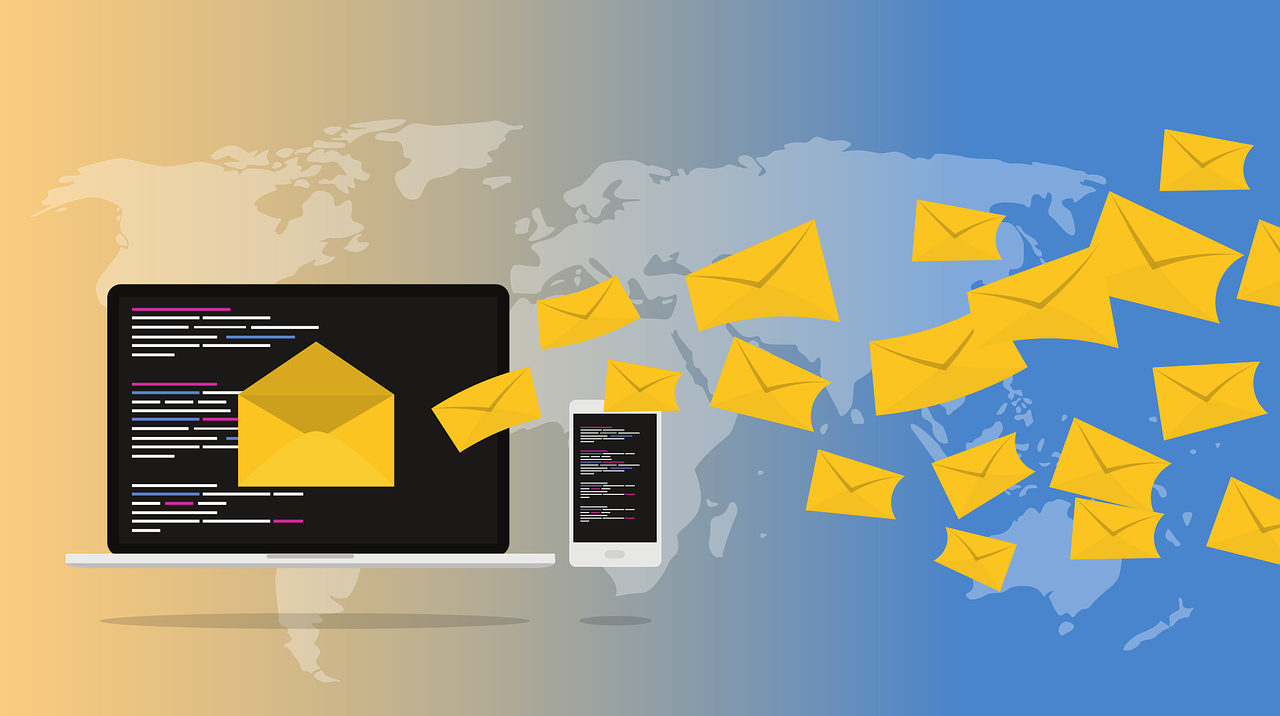
High Volume
If your store gets lots of orders, you need a strong platform. Shopify and BigCommerce both help big stores, but they work differently. Here’s how they compare:
Metric / Feature | Shopify | BigCommerce |
|---|---|---|
Scalability | Enterprise-grade with Shopify Plus; handles high-volume transactions, global multi-store; 99.98% uptime; automatic server scaling | Scales on Google Cloud; native multi-storefront; requires more manual configuration |
Conversion Rates | 15-25% higher than BigCommerce due to optimized checkout, mobile experience, UI design | 15-20% lower conversion rates due to less optimized checkout and limited customization |
App Ecosystem | Over 8,000 apps driving upselling, personalization, loyalty, conversion optimization | Around 1,200 apps; fewer revenue-driving functionalities; reliance on custom development |
Revenue Impact from Apps | Increases average order value by 20-40%; upselling and cross-selling can boost AOV by 30-60% | Limited app functionality restricts revenue growth |
Payment Flexibility | Shopify Payments + 100+ gateways reduce cart abandonment by up to 35% | Limited payment options; pricing plans enforce revenue-based upgrades |
Shopify’s checkout and apps help you sell more. You get better conversion rates and can raise your average order value. BigCommerce can run big stores too, but you might need to set up more things yourself.
International
Do you want to sell in other countries? Shopify makes this easy. You can use many currencies and languages. There are over 100 payment gateways. Taxes and rules can be set up automatically. This can help you get more sales from other countries. BigCommerce lets you sell worldwide too. But you have to set up currencies, languages, and taxes by hand. You get less automation, so you may need a developer for a smooth store.
Setup

Onboarding
Starting your store should be easy. Shopify lets you launch a nice store in a few hours. You do not need tech skills. Drag-and-drop tools and over 70 mobile themes make setup fast. You get step-by-step help, so you never feel lost.
BigCommerce has drag-and-drop too, but it is harder to learn. You might need more time to figure out the dashboard. If you are new, Shopify feels easier and friendlier.
Management
After your store is live, you want it easy to run. Shopify’s dashboard is simple and clean. You can add products, change prices, and track orders fast. BigCommerce lets you customize more, but you may need to look deeper in the settings. If you like things simple, Shopify is best here.
Pricing

Plans
Shopify plans start at $29 per month. Advanced features cost up to $299. Shopify Plus for big brands starts at about $2,000 each month. BigCommerce plans go from $29.95 to $299.95. Enterprise stores get custom prices. Both have similar starting prices, but details are important.
Aspect | Shopify Pricing & Fees | BigCommerce Pricing & Fees |
|---|---|---|
Base Plans | $5 (Starter) to $2,300+ (Shopify Plus) per month | $29.95 to $299.95 per month; custom pricing for Enterprise |
Transaction Fees | Additional fees if not using Shopify Payments | No additional transaction fees regardless of payment gateway |
Staff Accounts | Extra fees beyond certain limits | Unlimited users at no extra cost |
Included Features | Requires many paid third-party apps | More native features out-of-the-box |
Free Trial |
Fees
Shopify charges more if you use other payment providers. You may also pay for extra staff accounts and apps. BigCommerce never charges transaction fees, no matter what payment gateway you use. You get unlimited users for free. If you want more built-in features and no surprise fees, BigCommerce can save you money. If you want more choices and do not mind paying for apps, Shopify gives you more ways to grow.
Tip: Try both free trials to see which one fits your budget and style.
Flexibility

Apps
When you run an online store, you want tools that help you grow. Shopify and BigCommerce both give you lots of choices, but they do it in different ways.
Shopify has a huge app store. You can pick from over 13,000 apps. These apps help you with marketing, shipping, customer service, and more. You do not need to know how to code. Just find an app, click install, and you are ready. Many apps are free, but some cost extra. You can try new features without changing your whole store.
BigCommerce takes a different path. You get many features built right into the platform. You might not need as many apps. If you want more, BigCommerce has an app marketplace too, but it is smaller than Shopify’s. You will find apps for email, SEO, and payments. If you have a developer, you can use BigCommerce’s strong API tools to build your own custom apps.
Here’s what stands out about each platform’s flexibility with apps:
Shopify gives you a massive app ecosystem and easy development tools. You can add almost any feature you want.
BigCommerce focuses on built-in features and offers strong developer tools for custom solutions.
Both platforms use fast CDN services and handle busy shopping days without slowing down.
Tip: If you like to try new tools and want lots of choices, Shopify is a great pick. If you want more features included from the start, BigCommerce keeps things simple.
Customization
You want your store to look and work just the way you like. Both Shopify and BigCommerce let you customize your store, but they offer different paths.
Shopify makes design changes easy. You can pick from many themes and change colors, fonts, and layouts with just a few clicks. If you want to go deeper, Shopify gives you access to its code. You can use the GraphQL API to build custom features or connect to other tools. This means you can make your store unique, even if you start with a basic theme.
BigCommerce also lets you change your store’s look. You get over 170 themes and can edit the code for more control. BigCommerce invests in developer tools and has strong API documentation. If you want advanced features, you can build them or connect to outside systems. BigCommerce supports headless commerce, so you can use your own front-end design while keeping BigCommerce as the engine.
Here’s what you get with customization:
Shopify offers easy theme changes and powerful APIs for deep customization.
BigCommerce supports custom report builders, direct database access, and advanced developer tools.
Both platforms let you scale your store’s design and features as your business grows.
Note: Shopify is best if you want quick changes and lots of design options. BigCommerce is better if you have a developer and want full control over every detail.
Security

Compliance
You want your customers to feel safe shopping at your store. That means you need to follow important rules. Shopify and BigCommerce both help you do this. They make sure your store is safe for payments and customer data.
Both platforms meet PCI DSS Level 1. This is the top level for payment safety. You also get free SSL certificates on both platforms. This keeps your customers’ information safe when they buy things. You do not have to set up these protections yourself. Shopify and BigCommerce do it for you.
You also get tools to help with privacy laws. Shopify and BigCommerce support GDPR and CCPA rules. You can handle customer data requests and privacy settings from your dashboard. This makes it easier to follow the law, even if you sell in other countries.
Here are some ways both platforms help you stay compliant:
PCI DSS Level 1 is automatic
Every store gets a free SSL certificate
Privacy tools for GDPR and CCPA are built in
Security audits and updates happen often
You do not have to be a security expert. Shopify and BigCommerce give you what you need to keep your store safe and legal.
Fraud Prevention
Fraud can cause big problems for your store. You want to stop it before it happens. Shopify and BigCommerce use smart technology to protect you and your customers.
You get many layers of fraud protection:
AVS checks for addresses
Identity checks for buyers
Real-time risk scoring for orders
Device fingerprinting and machine learning
Shopify Protect gives free fraud protection
Chargeback guarantees from partners like ClearSale, Signifyd, and Riskified
Shopify Protect is special. It gives you free fraud checks and covers chargebacks. Machine learning looks at every order for fraud. You do not pay extra or need special apps.
BigCommerce works with top fraud tools. You can use ClearSale, Signifyd, and Riskified. These tools use machine learning to find risky orders. They also give chargeback guarantees, so you do not lose money if fraud happens.
Here’s a quick look at how some top platforms help with fraud:
Platform | Key Statistics and Claims |
|---|---|
F5 Bot and Fraud Platform | Protects over 2 billion transactions daily; serves 16,500+ customers; finds almost 5 times more fraud each month with fewer mistakes; uses AI, ML, and biometrics for real-time fraud checks. |
Shopify Protect | Free fraud protection; automatic machine learning checks; covers chargebacks for Shopify sellers at no cost. |
ClearSale | ML watches shopping behavior; flags strange orders; chargeback guarantee covers fraud fees; works with big eCommerce platforms. |
Signifyd | Chargeback guarantee; 14-day free trial; offers different fraud prevention plans. |
Riskified | Real-time fraud decisions with ML; chargeback guarantee; works with big eCommerce platforms. |
Tip: You can feel safe knowing Shopify and BigCommerce use the newest fraud tools. This gives you peace of mind and more time to grow your store.
Use Cases
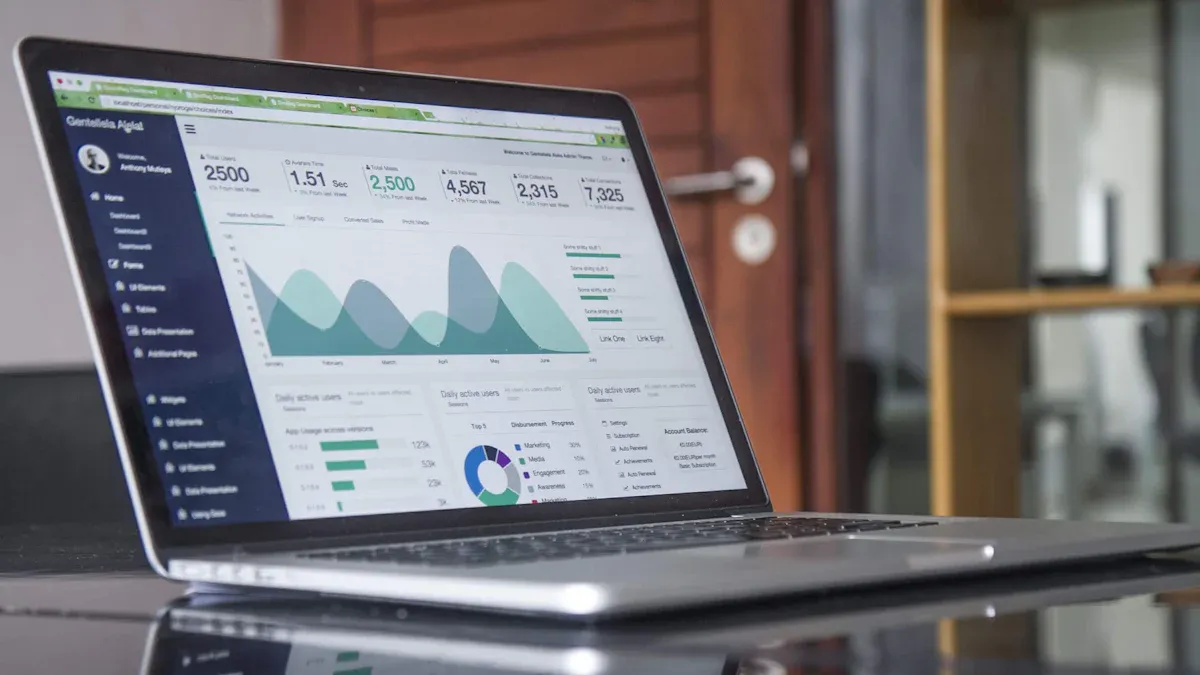
Startups
If you’re just starting out, you want a platform that helps you move fast and learn what works. Shopify is a favorite for new businesses because you can set up your store in a day and start selling right away. You don’t need to know how to code. The dashboard is simple, and you get lots of guides to help you.
When you launch your startup, you need to track how well you’re doing. Shopify makes it easy to see important numbers like:
Lead generation and customer sign-ups
How many people buy after visiting (conversion rate)
How much money you make each month (MRR)
Customer feedback and reviews
You can also watch your marketing costs, like how much you spend to get a new customer or how much you earn for every dollar spent on ads. These numbers help you make smart choices and grow faster.
BigCommerce is also an option for startups, especially if you want more features built in from the start. You get tools for coupons, email, and SEO right away. But you might find the setup a bit harder if you’re new to online selling.
Most eCommerce startups have about a 20% success rate. If you use a platform that helps you track your numbers and test ideas, you give yourself a better shot at winning.
Growing Brands

As your business grows, you need a platform that can keep up. Both Shopify and BigCommerce work well for brands that are ready to scale. Shopify gives you thousands of apps to add new features as you need them. You can sell on social media, run email campaigns, and track your sales in real time.
BigCommerce stands out if you want more built-in features and plan to sell in different countries. You get multi-currency support and global shipping tools. This makes it easier to reach new customers around the world.
Here’s a quick look at what matters for growing brands:
What to Look For | Why It Matters |
|---|---|
Scalability | Handles more products and customers |
Integrated Solutions | Storefront, inventory, CRM, and payments in one |
Cost Control | Keeps expenses low as you add features |
Omnichannel Support | Sells on web, mobile, and social platforms |
The eCommerce market keeps getting bigger. Experts say the market will reach over $9 billion in 2025 and almost double by 2030. Brands that use platforms with built-in tools and easy integrations can grow faster and spend less time on tech headaches.
Large Businesses
Running a big store means you need power and flexibility. Shopify Plus and BigCommerce Enterprise both offer strong solutions for large businesses. You get advanced security, custom checkout, and support for many staff accounts.
BigCommerce gives you more control if you have a tech team. You can build custom features and connect to outside systems. Shopify Plus makes it easy to manage many stores and track sales across countries.
Large companies often need to handle lots of data and make smart decisions fast. Platforms now use special tools to help with:
Financial analysis and reporting
Predicting sales trends
Managing risk and safety
Tracking customer behavior
You can use dashboards to see your numbers and spot trends. This helps you make better choices and stay ahead of the competition.
If you run a large business, pick a platform that gives you strong analytics and lets you customize your store as you grow. Both Shopify and BigCommerce have what you need to succeed at scale.
International Sellers

Selling to people in other countries can help your business grow fast. You can find millions of new customers. But selling worldwide is not always easy. You have to think about languages, money, payments, and shipping rules. Shopify and BigCommerce both help you sell in other countries, but they do it differently.
Shopify makes it simple to sell around the world. You can use many languages in your store. You can show prices in local money. Shopify works with over 100 payment gateways. Your customers can pay with PayPal, credit cards, or local apps like Alipay and Paytm. Taxes and duties can be set up to work by themselves. This saves you time and keeps your store legal. Shopify has tools to help you manage orders from anywhere. You can join a big network of buyers and sellers. You can learn from others and see what works in different places. You can change your plan fast if you need to.
BigCommerce gives you strong tools for selling in other countries too. You can make different storefronts for each country. You can pick local payment and shipping options. You get support for many currencies and languages. If you have a developer, you can use BigCommerce APIs to build special tools for each country. This is good if you want more control or need to follow special rules.
Here is a quick look at selling worldwide:
Aspect | Statistic / Fact | What It Means for You |
|---|---|---|
Global Market Size | Big chance to grow your business | |
Growth Rate | 26.4% CAGR, 219% faster than overall eCommerce | This is the fastest-growing part of online sales |
Top Regions | China (37% of shoppers), Europe (Germany, UK, France) | Focus on these places for more sales |
Payment Preferences | Alipay, WeChat Pay, Paytm, Cards, PayPal | Offer local ways to pay to get more buyers |
Key Challenges | Regulations, localization, logistics, competition | You need smart tools and good plans |
Customer Service | Multilingual, 24/7, local communication | Helps build trust and keeps customers happy |
Selling in other countries is more than just changing your website’s language. You need to know the rules, offer the right ways to pay, and ship orders fast. Both Shopify and BigCommerce help you do this. Shopify is easier for beginners. You get more things done for you. BigCommerce lets you control more if you want to change every detail.
Tip: Start with one or two countries first. See what works, then add more. Use your platform’s analytics to watch sales, customer feedback, and shipping times. This helps you fix problems early and grow faster.
Selling to other countries is growing fast. If you use the right platform and stay flexible, you can build a global brand and find new customers every day.

Recommendation
Summary
You want a platform that helps your business grow. It should also be simple to use. Shopify and BigCommerce both have strong tools. But each one is best for different reasons. Here’s a quick look at how they compare:
Feature Category | BigCommerce Strengths | Shopify Strengths | Competitive Edge Summary |
|---|---|---|---|
SEO | Advanced built-in SEO tools (custom URLs, meta tags, sitemaps) enhancing organic traffic | Basic SEO features, often requiring apps for advanced SEO | BigCommerce offers stronger native SEO capabilities, better for organic growth without extra apps |
Transaction Fees | No transaction fees regardless of payment gateway | Transaction fees apply unless using Shopify Payments | BigCommerce saves costs for high-volume sellers by eliminating transaction fees |
Multi-Channel Selling | Supports selling on Facebook, Instagram, Amazon, eBay, and more | Supports Facebook and Instagram but limited Amazon integration | BigCommerce provides broader multi-channel selling options |
B2B Features | Extensive built-in B2B functionalities (customer pricing, bulk discounts) | Limited B2B features, mostly via third-party apps | BigCommerce better suits B2B and larger enterprises |
Product Variants | Unlimited product variants | Limits product variants based on plan | BigCommerce better for stores with large, complex inventories |
APIs and Customization | Highly customizable APIs for complex integrations | Robust but less flexible API | BigCommerce offers more flexibility for tech-savvy businesses |
Reporting and Testing | Advanced reporting tools and staging environments for testing changes | Reporting often requires third-party apps; no staging environment | BigCommerce provides more comprehensive analytics and safer deployment options |
User Interface and Ease | User-friendly but with a learning curve for advanced features | Intuitive drag-and-drop interface, easy for beginners | Shopify excels in ease of use and quick store setup |
App Ecosystem | Smaller but high-quality app integrations | Vast app marketplace for extensive customization | Shopify offers more customization options through apps |
Customer Support | Support mainly during business hours | 24/7 live chat and phone support | Shopify provides more accessible and continuous support |
Pricing | More features included at base price, no extra transaction fees | Base price lower but costs can escalate with add-ons and transaction fees | BigCommerce offers better value for feature-rich needs; Shopify can be costlier with add-ons |
Mobile Responsiveness | Responsive themes focused on functionality | Mobile-optimized themes with more design flexibility | Shopify has an edge in mobile design and user experience |
Shopify is easier to use if you want to start fast. Many people like the drag-and-drop tools and big app store. BigCommerce is great for built-in features, strong SEO, and no transaction fees. If you have a big or B2B store, BigCommerce gives you more control and can save you money.
If you want to start quickly and use lots of apps, Shopify is a good choice. If you need advanced features and want to skip extra fees, BigCommerce is smart.
How to Choose
Picking the right platform can feel hard. But you can make it easier by thinking about what matters most. Ask yourself some questions:
What do you sell? (Is it physical, digital, or a service?)
How fast do you want your store online?
Do you want features built in, or do you like adding apps?
Will you sell to other businesses or just to shoppers?
Is SEO very important for your store?
Do you want to avoid paying transaction fees?
How much help do you need with tech problems?
Some businesses use special tools to help them decide. These tools help you compare things like growth, user experience, security, mobile design, SEO, integrations, support, and cost. You can ask your team for their ideas too.
Here’s a simple checklist to help you pick:
Write down your business goals and what makes your store special.
Check if the platform can grow with your business.
Look for a dashboard that is easy for your team.
Make sure payment and security are strong enough.
Try shopping on your phone with each platform.
See if the SEO tools are easy to use.
Look at what apps or integrations you can use.
Compare support hours and help resources.
Add up all costs, including apps and fees.
Read reviews from other business owners.
Tip: Try both free trials. You will see which one feels better for you and your team.
Next Steps
Ready to get started? Here’s a step-by-step plan to help you launch your store:
Build Your Team
Pick a few people to help you set up. You might want someone to manage the project, someone who knows your products, and a tech helper.Pick Your Platform
Choose Shopify or BigCommerce based on your answers. Think about your business and what your customers want.Get Everyone on Board
Talk to your team so everyone knows the plan. This helps stop surprises later.Prepare Your Data
Gather your product info, customer lists, and order history. Make sure your data is clean and ready to move.Customize Your Store
Use themes and apps or built-in tools to make your store look and work how you want. Try new features if you want.Train Your Team
Show your team how to use the new platform. Use guides, videos, or training like BigCommerce University.Plan for Launch and Beyond
Test your store before you go live. After launch, watch your numbers. Look for ways to improve with automation, loyalty programs, and customer feedback.
Note: There are over 26 million ecommerce sites. Good planning and the right platform help you stand out.
Now you are ready to pick the best platform for your business. Take your time, try the free trials, and trust your gut. Your perfect store is just a few steps away! 🚀
You’ve seen how Shopify and BigCommerce stack up for 2025. Match your business needs to each platform’s strengths for the best results. Here’s what stands out:
Video content rules on TikTok, Instagram, and YouTube, helping brands grow fast.
Free trials boost sign-ups by 3–7%, and expert advice can double your conversions.
Top stores hit 5% or higher conversion rates with smart tools and clear calls to action.
Try a free trial or talk to an expert. The right choice depends on your goals, but you’re now set to make a smart move!

FAQ
What makes Shopify easier for beginners?
Shopify gives you a simple dashboard. You can drag and drop to build your store. You do not need to know how to code. You get step-by-step guides and 24/7 support. You can launch your store in just a few hours.
Does BigCommerce really save you money on fees?
Yes, BigCommerce does not charge transaction fees, no matter which payment gateway you use. You can keep more of your profits, especially if you sell a lot. You also get many features built in, so you buy fewer apps.
Can I switch from Shopify to BigCommerce or the other way?
You can switch platforms. Both Shopify and BigCommerce let you export your products and customer data. You may need to adjust your store design and apps. Some features may work differently, so test before you move everything.
Which platform is better for selling worldwide?
Shopify makes it easy to sell in many countries. You get tools for multiple languages, currencies, and local payments. BigCommerce also supports global sales, but you may need more setup. Shopify automates more steps for you.
Do I need a developer to use BigCommerce?
You do not need a developer for basic stores. If you want advanced features or custom designs, a developer helps. BigCommerce gives you more control, but some options need technical skills.
How do both platforms handle security?
Both Shopify and BigCommerce protect your store with PCI DSS Level 1 and free SSL certificates. Shopify handles most security for you. BigCommerce gives you strong tools, but you may need to set up some features yourself.
Can I use my favorite marketing tools?
You can use popular marketing tools on both platforms. Shopify has a bigger app store, so you find more options. BigCommerce covers the basics with built-in tools and connects to top apps like MailChimp and Buffer.
Tip: Try the free trials to see which platform fits your style and tools best!

TangBuy: A Smarter Way to Dropship in 2025
If you're looking to stay competitive with dropshipping in 2025, speed and trend-awareness are key. TangBuy helps you stay ahead with real-time product trends, fast fulfilment, and factory-direct sourcing. With over 1 million ready-to-ship items, 24-hour order processing, and seamless Shopify integration, TangBuy makes it easier to test, scale, and succeed in today's fast-moving eCommerce landscape.
See Also
BigCommerce Versus Shopify Which eCommerce Platform Triumphs In 2025
Choosing Between Shopify And WooCommerce For Your Business Needs
Online Sellers Deciding Between Amazon And eBay In 2025
Selecting Amazon Or eBay For Your Online Business Success 2025
Comparing Dropshipping And Amazon FBA For Higher Profits In 2025
